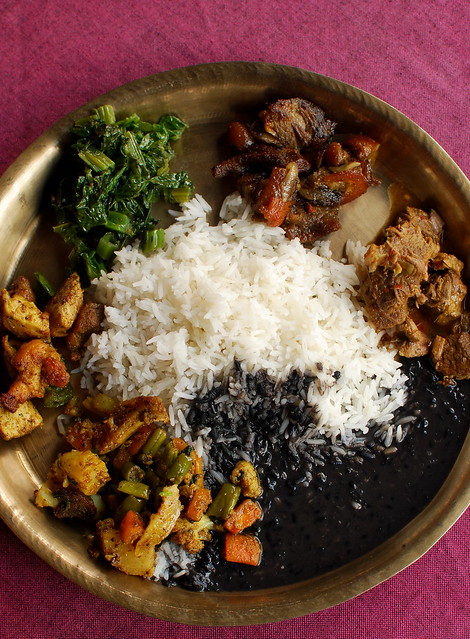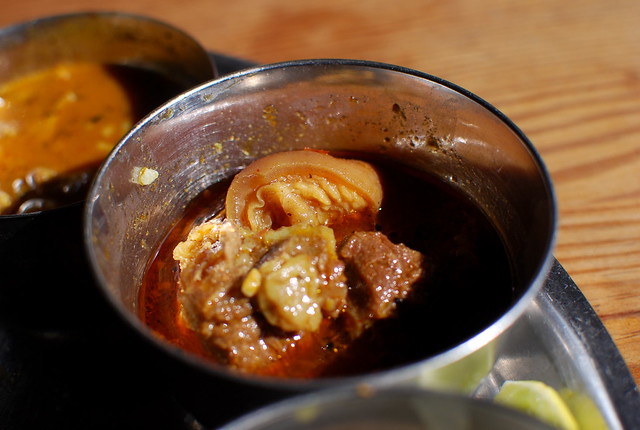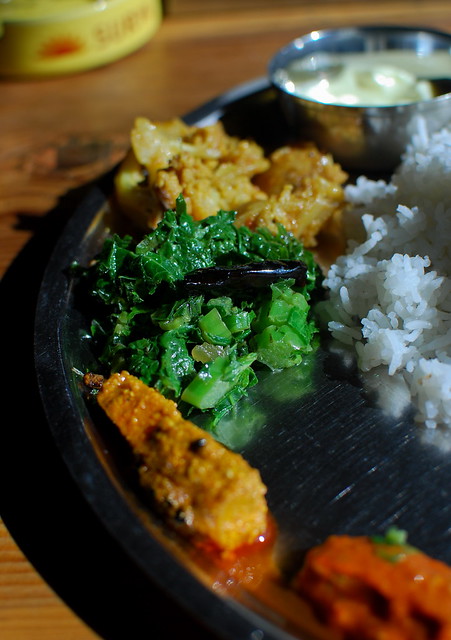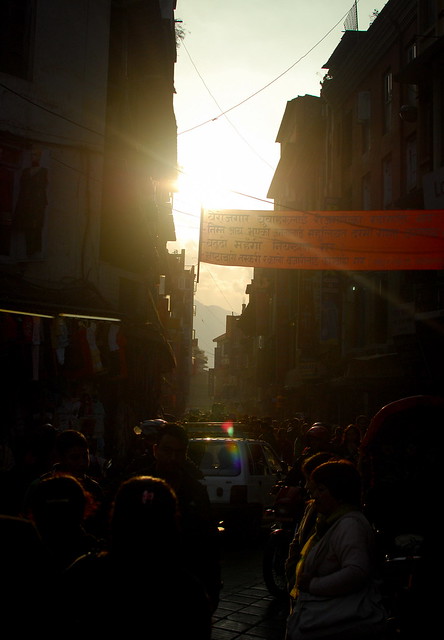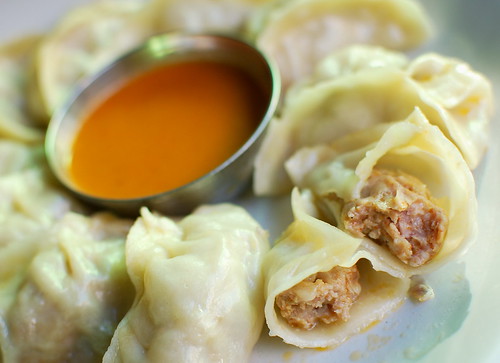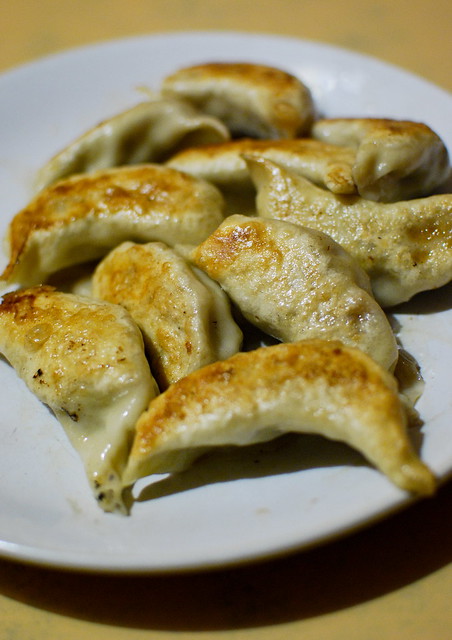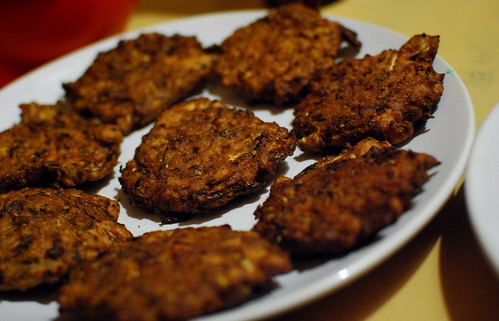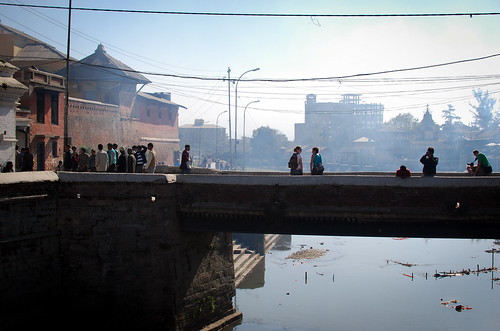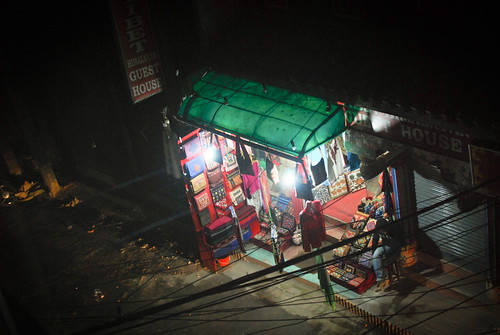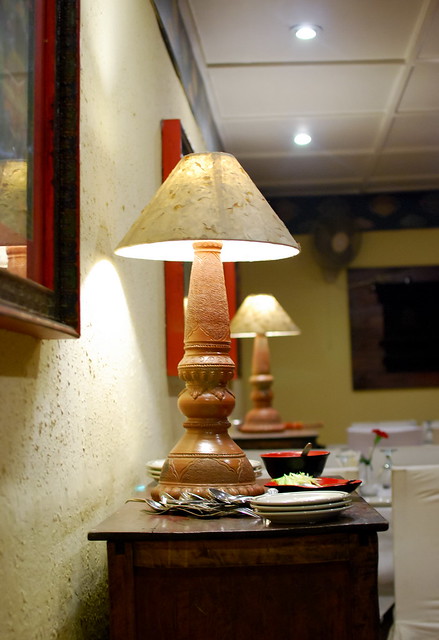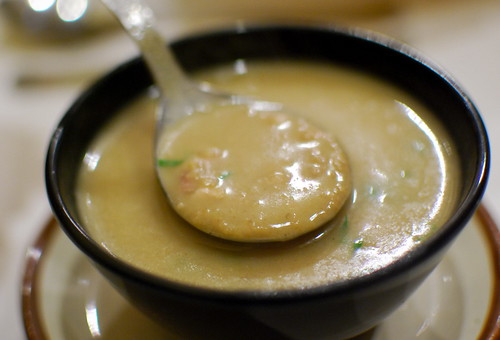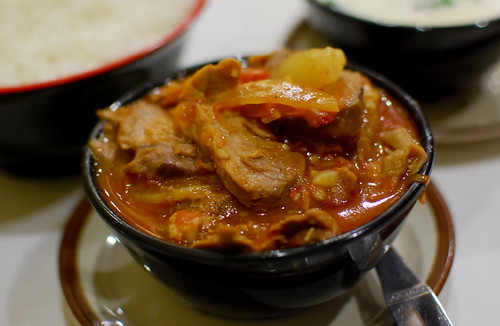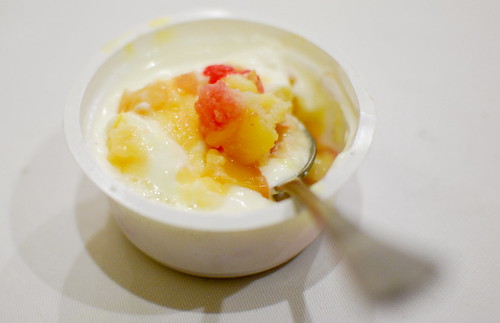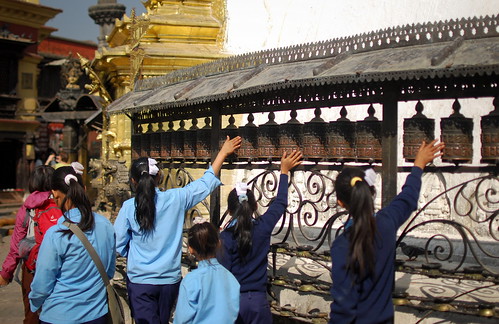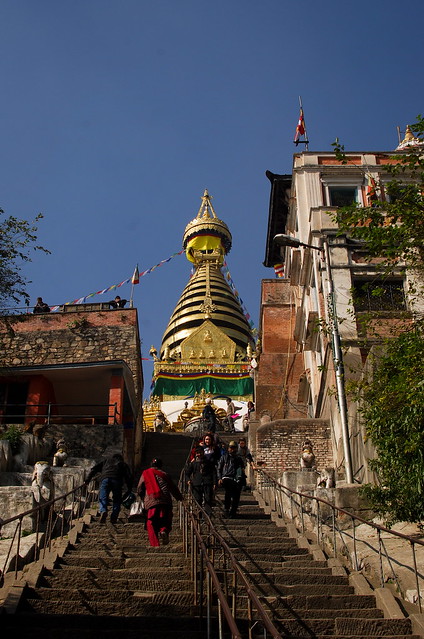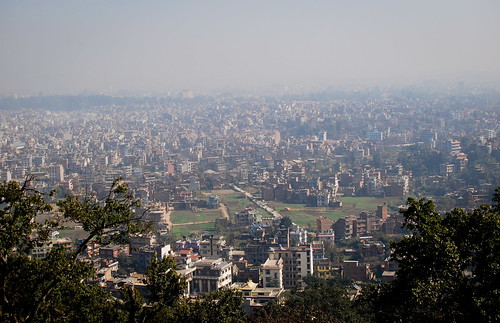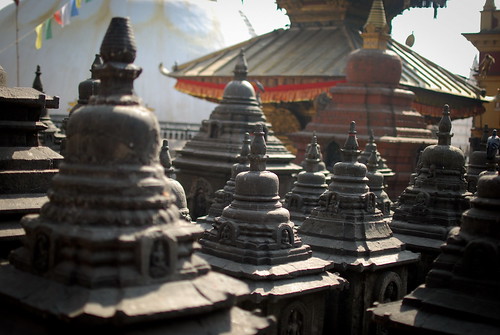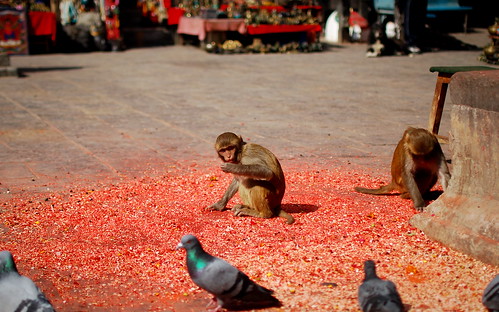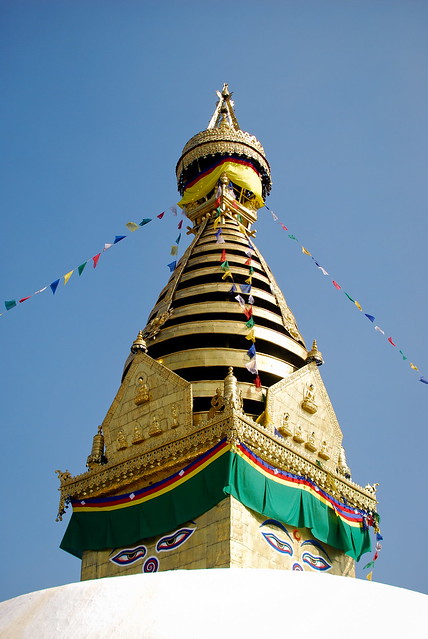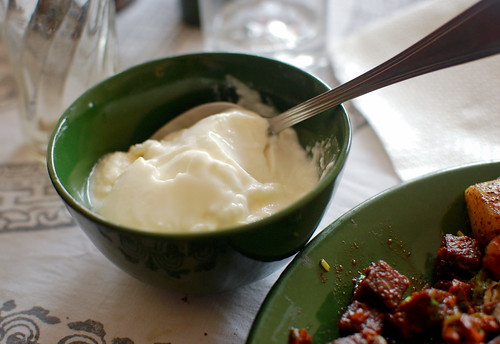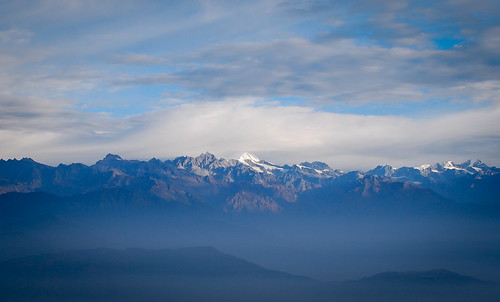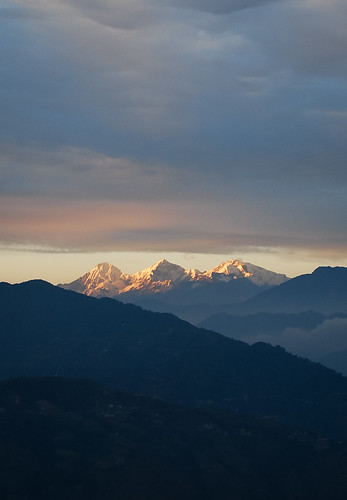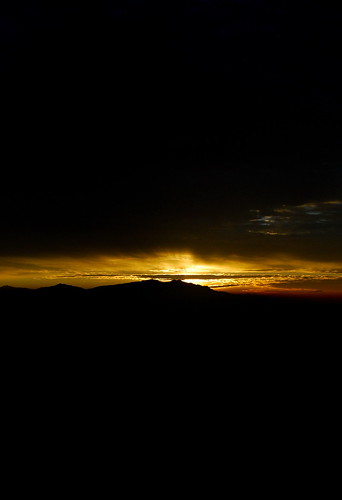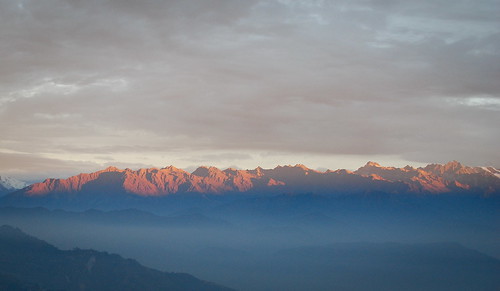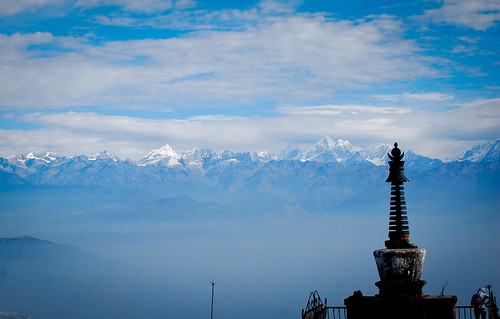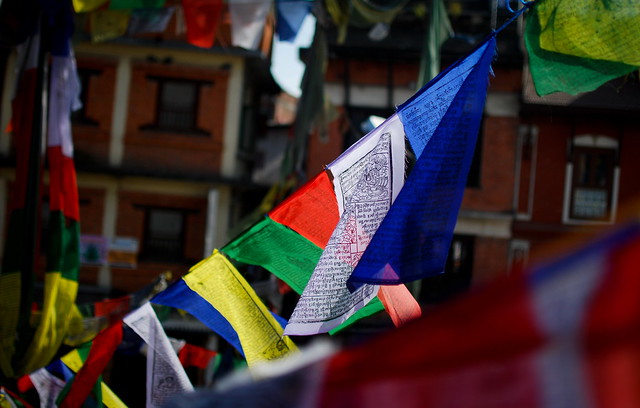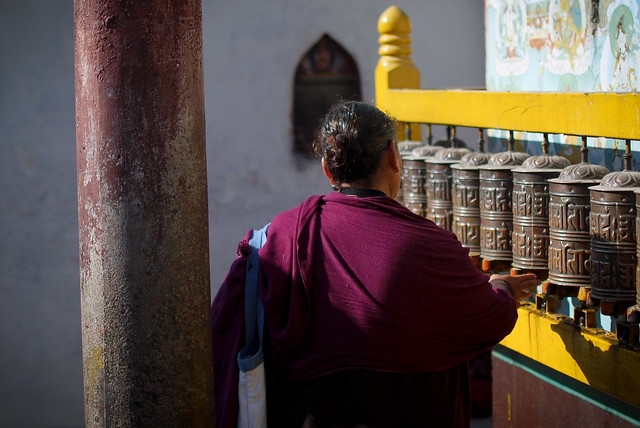Bhaktapur Durbar Square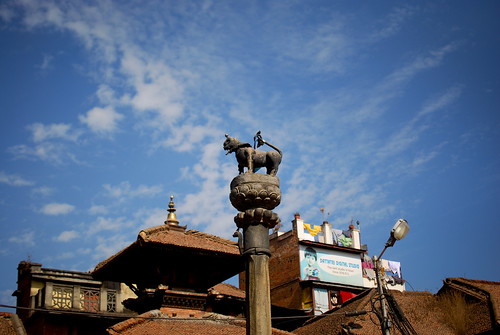
Great, I was nowhere on the map! My first instinct was to follow the stream of people. It may sound like a great idea but in a foreign land, it takes a little more courage to do so.
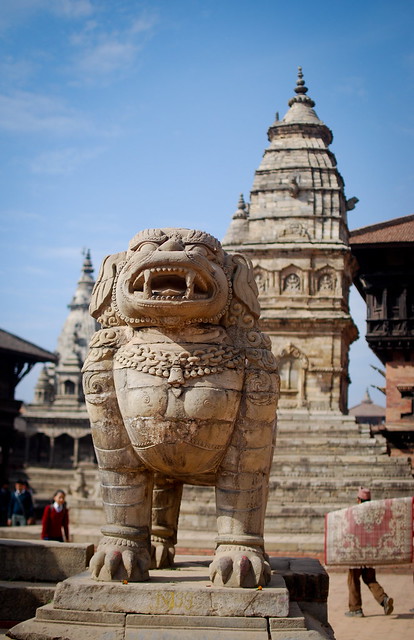
Even at the square's entrance, I was still finding my bearings. The complimentary booklet did a better job at explaining the city's history than as a map. I took my Lonely Planet Tour Guide from my bag and the touts voluntary tour guides started swarming my way.
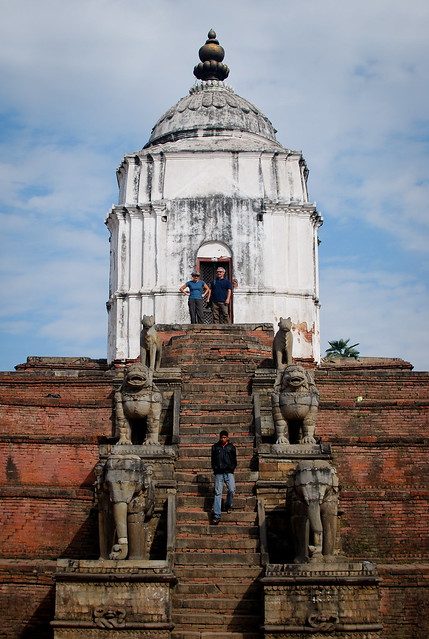
I ran for dear life, entered Lion's Gate and found myself surrounded by temples and shrines. Unlike Kathmandu, the colours were more natural, almost in shades of sandstone. Under King Bhupantindra Malla's column, I studied my position thoroughly and found my way to Taumadhi Tole, where the soaring Nyatapola Temple was located. And it didn't take long before I made it to the Dattatreya, a temple carved with erotic scenes at Tachupal Tole. Here as well, two dance platforms were constructed on opposing ends but instead of dancers, small batches of harvested grains were left to dry.

The spread of drying clayware at Potter's Square was, on the other hand, massive and with the kilns located within the square, the complete process can be observed, if one stays long enough.
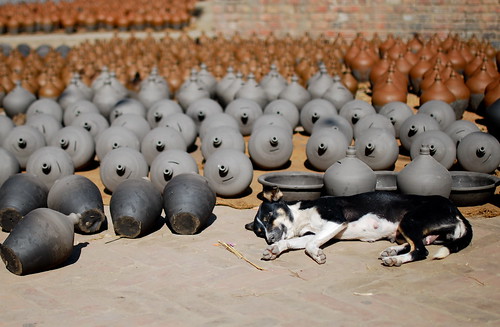
Perhaps it was due to my visit in the afternoon that this City of Devotees was a much quieter affair compared to bustling morning at Kathmandu.

I glimpsed at my watch and realized that I didn't have much time left to wander. And I rushed to Sunny Cafe for a taste of samay baji.
Kathmandu Durbar Square
My friend, don't read Lonely Planet. They make you lonely.
That has got to be one of the most interesting marketing lines that I've heard in a long time. A solo traveler with a book in hand that looked rather Japanese, I was an easy target for them, especially in the morning when most tourists were still busy breakfasting in their hotels. The durbar square was at its busiest and most colourful in the morning as the market began its short operation and devotees arrived to pray to their respective Gods, so there's no way that I'd want to miss this experience. And inevitably, dealing with touts comes with the package.

You have to give credit to this particular friend for such a creative line and for his persistence - unknowingly, he had followed me to the top tier of Maju Dega, a towering Hindu shrine. While I acknowledged his efforts, I had to decline his offer because I'm a total Lonely Planet Tour Guide junkie. By 11 am, I think I'd ignored a dozen of them and I was getting restless.
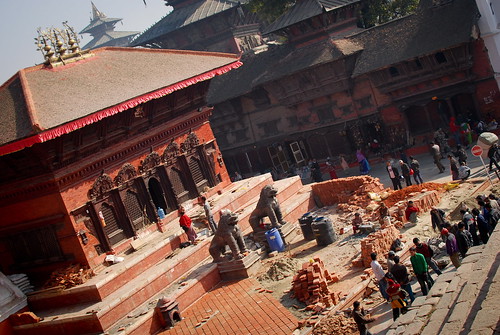
But I was held back by the incredible sights of the square - smoke emitted from the various temples (especially at Kasthamandap or the Pavilion of Wood), the regal gold and red paints of the historic buildings and the vegetables and fruits hawkers in action.
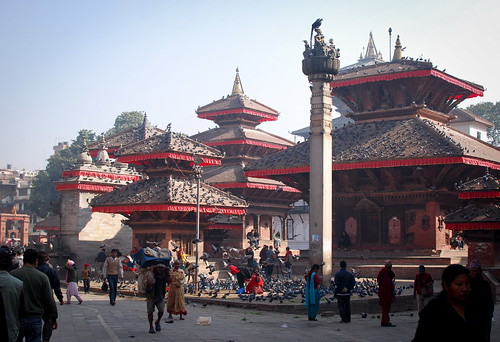
I must have returned to my reference point, the stunning Kal Bahirav (the manifestation of Lord Shiva in his most fearsome, where people were made to swear the truth in the past) a few times, and yet, I'd still missed the Kumari-ghar or the House of the Kumari Devi, the incarnation of goddess Taleju. I was just not fortunate enough to meet her that day, I guess. I left while the durbar was still buzzing. By now, I'd located most of the touts and I believe they'd known me as the lonely guy. I exited the chaos, headed towards Maru Tole, northwest of Kathmandu, where life took a much slower pace, and began a peaceful 3 km walk towards the holy Swayambhunath.
Patan Durbar Square
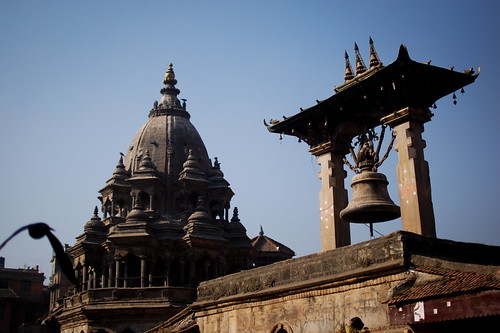
The Sun Dhoka (Golden Gate) opened and I was in the Patan Museum, a hidden gem in the busy square where an impressive collection of religious art awaits. At 11 am, I had the privilege of having the whole museum to myself.
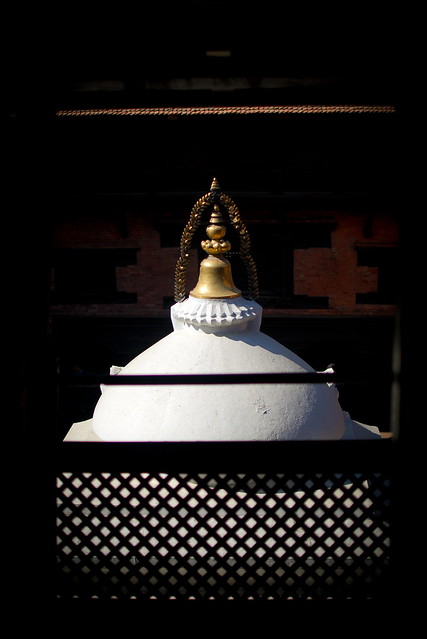
I sat by the window on the top level of the former palace and had an aerial view of the durbar square. In ancient times, the Malla Kings used to live here and perhaps, had sat at the same position as I did.
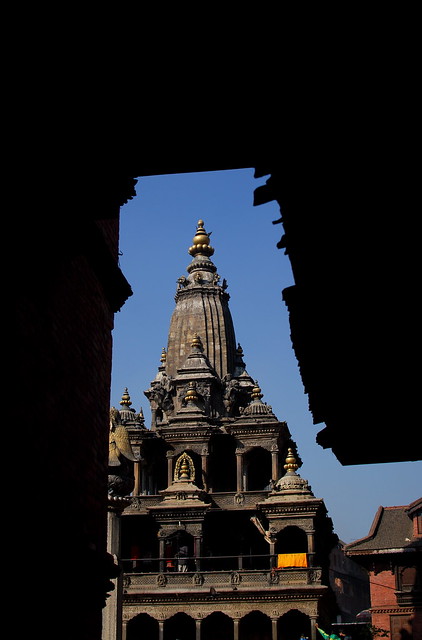
Directly in front of me was the Garuda statue, facing the Krishna Mandir or the Temple of Vishnu. In front of the Krishna Mandir, flocks of pigeons were fed and a young girl dressed in a red, traditional costume was posing for her parents' camera. Her grandmother looked pleased. On my far left was the octagonal Krishna Temple, an outstanding construction at the entrance of the square to greet the visitors. Below, porters were carrying water from the Manga Hiti (a water conduit) to the nearby stalls. To my right, men in traditional Nepali hats and women in colourful dresses sat in the wooden pavilion of Mani Mandap, watching the world go by, just like me. The square appeared to be the smallest of the 3 medieval kingdoms but its Newari architecture was stunning. In Sanskrit, Patan is called Lalitpur or the City of Beauty. I can't agree more.

________________
Click here for more photos of the Bhaktapur Durbar SquareClick here for more photos of the Kathmandu Durbar SquareClick here for more photos of the Patan Durbar Square
